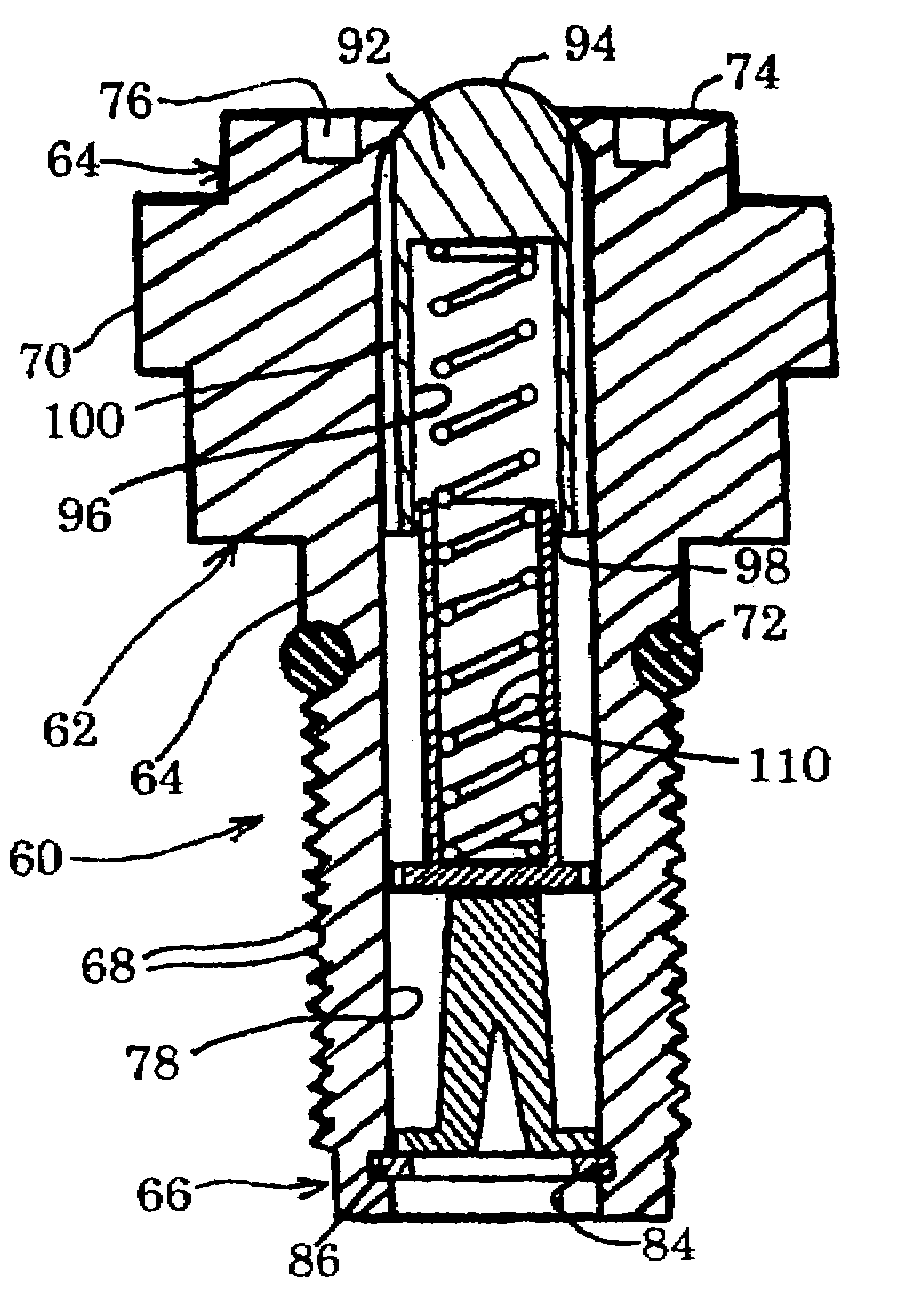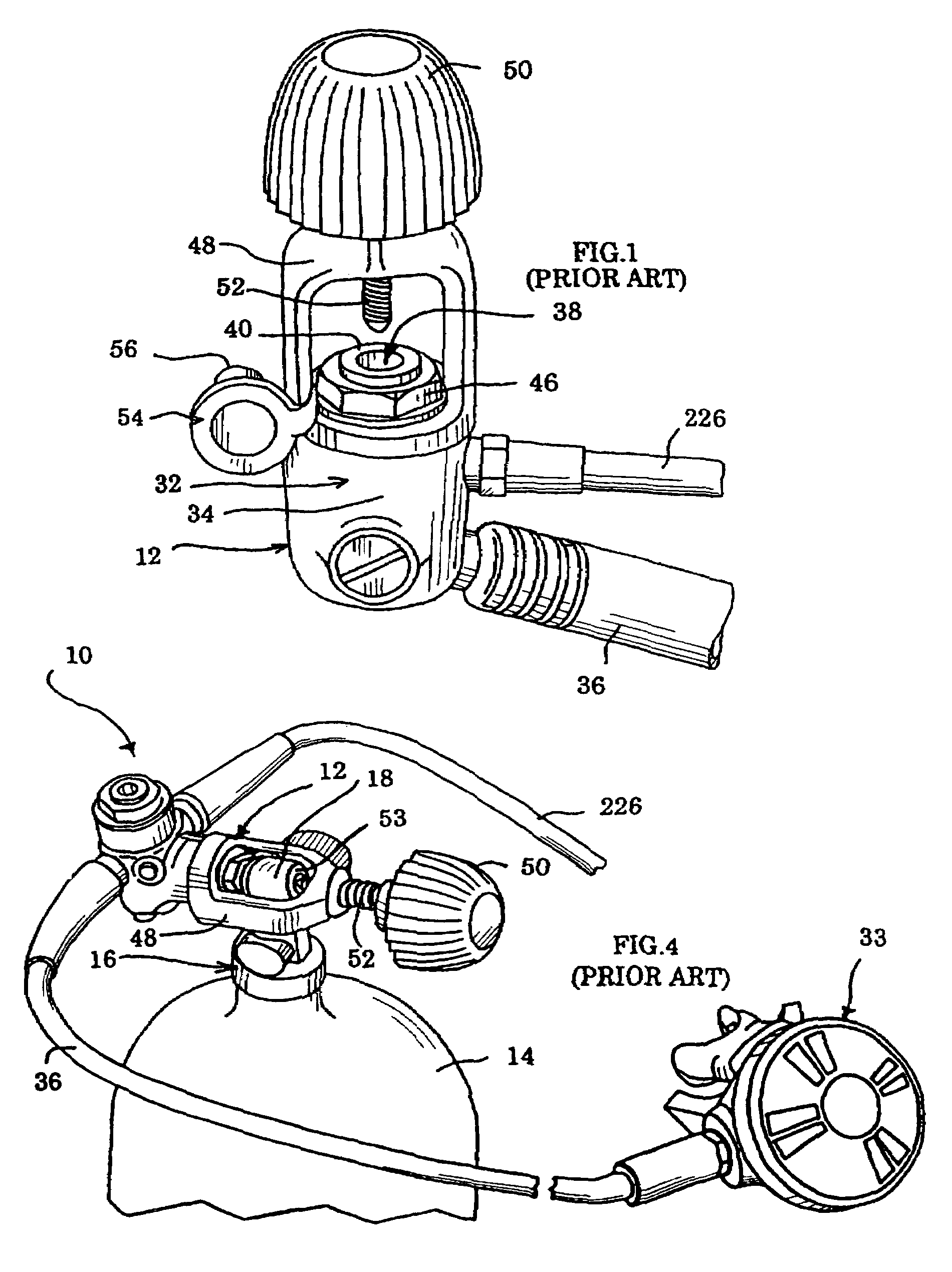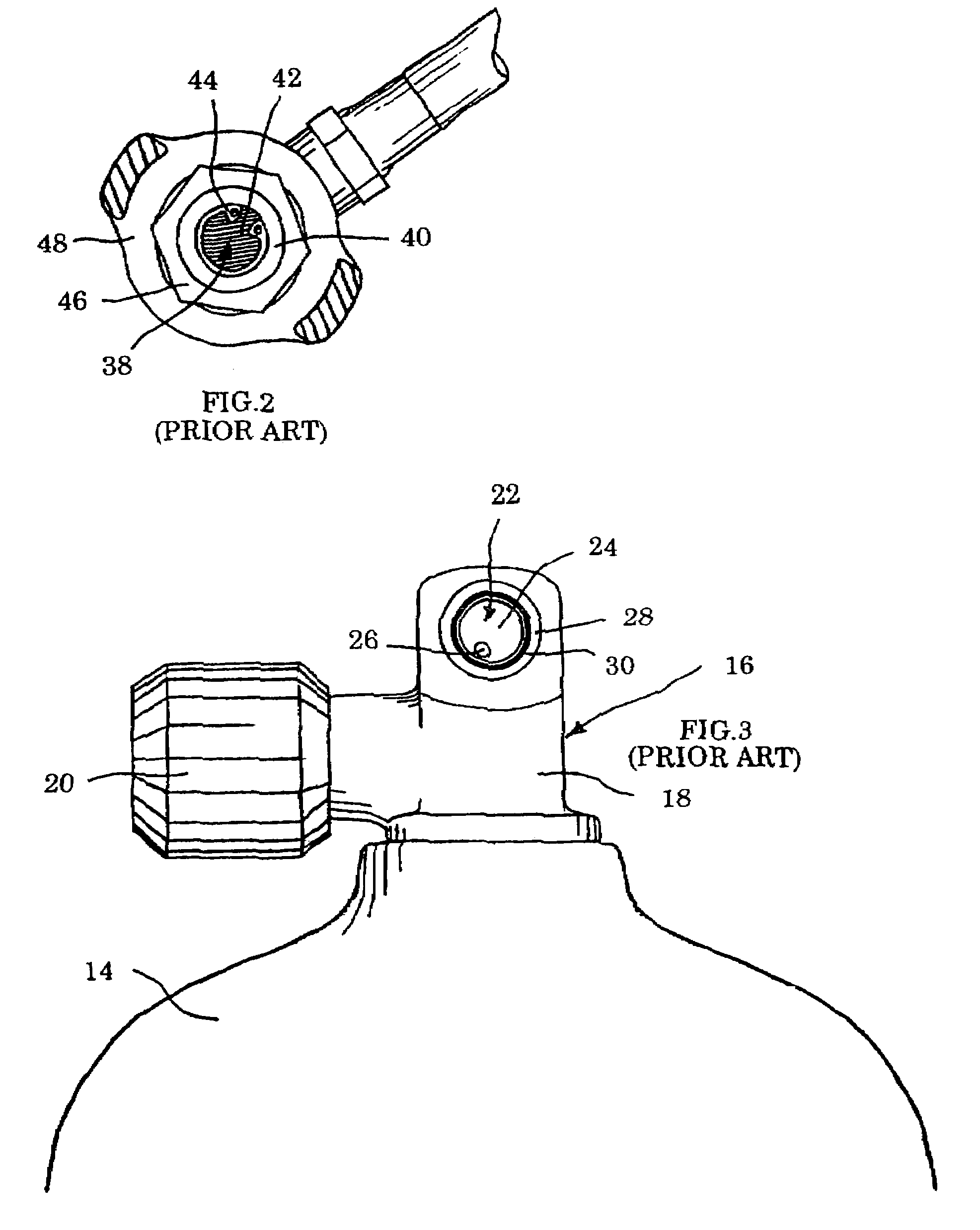Fluid flow control valve
a flow control valve and flow control technology, applied in process and machine control, underwater equipment, instruments, etc., can solve the problems of contaminating the assembly, and affecting the operation of the regulator assembly
- Summary
- Abstract
- Description
- Claims
- Application Information
AI Technical Summary
Benefits of technology
Problems solved by technology
Method used
Image
Examples
second embodiment
[0077]Referring now to FIGS. 15-17, the fluid flow control valve of the present invention is disclosed. This embodiment is preferably in the form of a valve member 118 that includes a housing 62 constructed substantially identical to the prior embodiment of FIGS. 5-14. The housing 62 of this embodiment includes the upper or inlet end portion 64, an bottom or outlet end portion 66, a central bore 78, an annular inner lip 82 forming a narrowed end opening 80, and an exit opening 116. In this particular embodiment, the bias mechanism is also a coil spring 102. However, in this embodiment, the lower end portion 106 of the spring 102 is positioned around the filter member 114 against the base 115 thereof. There is no spring containment sleeve in this embodiment. The upper end portion 104 of the spring 102 is engaged with a pressure responsive element 88 as in the prior embodiment.
[0078]In this particular embodiment, the pressure responsive element 88 is preferably in the form of a solid ...
third embodiment
[0079]Referring now to FIGS. 18-20, the fluid flow control valve of the present invention is disclosed. This embodiment is preferably in the form of a valve member 132 that includes a housing 62 constructed substantially identical to the prior embodiments for FIGS. 5-17. The housing 62 of this embodiment includes the upper or inlet end portion 64, an bottom or outlet end portion 66, a central bore 78, an annular inner lip 82 forming a narrowed end opening 80, and an exit opening 116. In this embodiment, the bias mechanism is also a coil spring 102, and the lower end portion 106 of the spring 102 is positioned to be engaged within a spring containment sleeve 108 having a base portion 110 with notches 112, as in the embodiment of FIGS. 5-14. In this particular embodiment, however, the filter member 134 is substantially flat as opposed to the conical shape of the prior embodiments, the c-clip 86 holding all the internal components of the valve 132 in place within the bore 78. The upper...
fourth embodiment
[0081]Referring now to FIGS. 21-23, the fluid flow control valve of the present invention is disclosed. This particular embodiment includes a valve member 150 that is substantially identical to the valve member 118 of FIGS. 15-17 except for the construction of the pressure responsive element 88. In this embodiment as with all the embodiments, like numerals designate like parts. In this particular embodiment, the pressure responsive element 88 is in the form of a solid piston head 152 having an upper curved surface 154 similar to the surface 122 of the embodiment of FIGS. 15-17. A plurality of axially aligned and spaced longitudinal grooves 156 form fluid channeling elements and operate in the same manner as the grooves 124 of the prior embodiment. However, the bottom portion 158 of the piston head 152 includes an annular, radially recessed groove 160 which forms a radial shoulder 162. The upper end portion 104 of the spring 102 is sized to surround the shoulder 162 and seat in the g...
PUM
 Login to View More
Login to View More Abstract
Description
Claims
Application Information
 Login to View More
Login to View More - R&D
- Intellectual Property
- Life Sciences
- Materials
- Tech Scout
- Unparalleled Data Quality
- Higher Quality Content
- 60% Fewer Hallucinations
Browse by: Latest US Patents, China's latest patents, Technical Efficacy Thesaurus, Application Domain, Technology Topic, Popular Technical Reports.
© 2025 PatSnap. All rights reserved.Legal|Privacy policy|Modern Slavery Act Transparency Statement|Sitemap|About US| Contact US: help@patsnap.com



